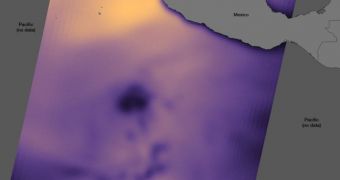Officials from the US National Oceanic and Atmospheric Administration (NOAA) are pleased to announce that data from the Suomi NPP satellites are already being included in numerical weather forecasts, just 7 months after the next-generation spacecraft was launched.
Compared to previous missions, data compiled by Suomi NPP is being used nearly three times faster. Usually, it takes a long time for information to be processed, and then included in computer models.
The mission is jointly managed by NOAA and the American space agency. The satellite was previously known as the National Polar-orbiting Operational Environmental Satellite System (NPOESS) Preparatory Project (NPP).
On January 24, 2012, just three months after it launched, NASA announced that the spacecraft would be named after famous University of Wisconsin-Madison (UWM) meteorologist, Verner E. Suomi.
The reason why data from the satellite can be used so soon is that its evaluation period was both accelerated and extremely rigorous. This enabled scientists to gain access to the impressive datasets the orbital instruments produced a lot sooner than normal.
Suomi NPP was launched to space aboard a Delta II delivery system from the Vandenberg Air Force Base (VAFB), on October 28, 2011. By May 22, 2012, its instruments were already producing data.
The satellite uses a Sun-synchronous orbit some 824 kilometers (512 miles) above Earth. This allows it to complete a full circle around the planet every 102 minutes, providing near-constant coverage of large atmospheric events.
“It takes tremendous effort to ensure data from a new satellite are accurate and ready to be used in advanced numerical weather models,” says the deputy administrator of NOAA, Kathryn Sullivan.
“Reaching this milestone clearly demonstrates the effectiveness of the partnership between NOAA and NASA and also speaks to the urgency both agencies have for getting these data into NOAA’s weather models to enhance our forecasts,” the official adds.
Suomi NPP carries five science instruments: the Advanced Technology Microwave Sounder (ATMS), the Cross-track Infrared Sounder (CrIS), the Ozone Mapping and Profiler Suite (OMPS), the Visible Infrared Imaging Radiometer Suite (VIIRS), and the Clouds and the Earth's Radiant Energy System (CERES).
“This data stream from Suomi NPP ensures NOAA will continue to provide life-saving forecasts. This is welcome news after the devastating weather events of 2011, and as the United States comes closer to becoming a Weather Ready Nation,” Sullivan concludes.

 14 DAY TRIAL //
14 DAY TRIAL //